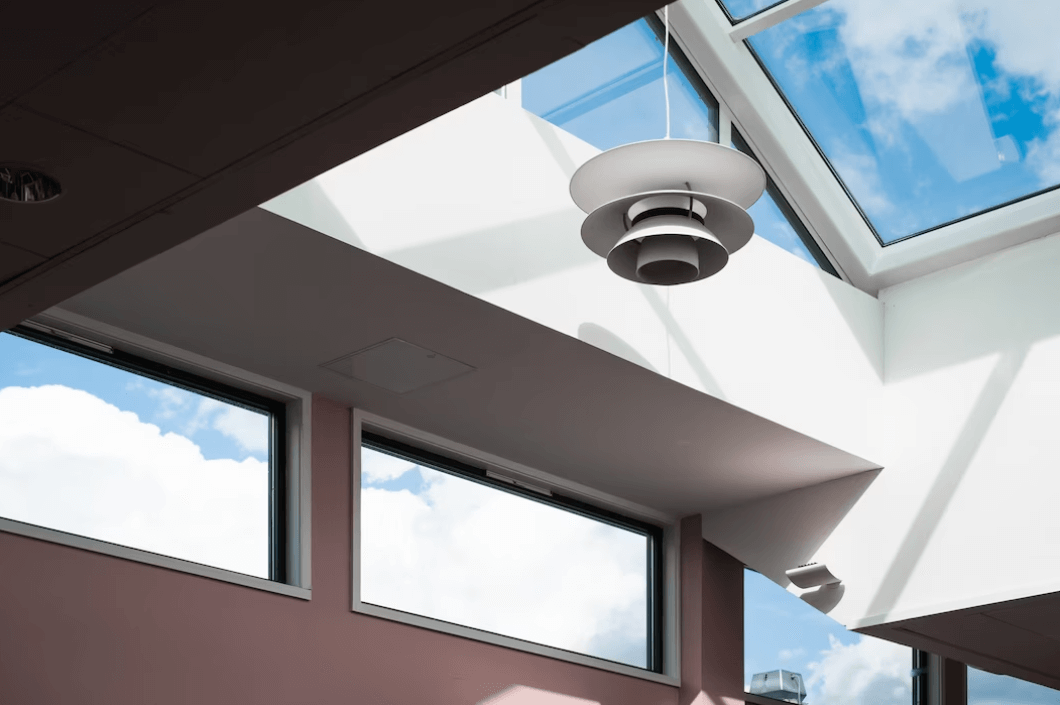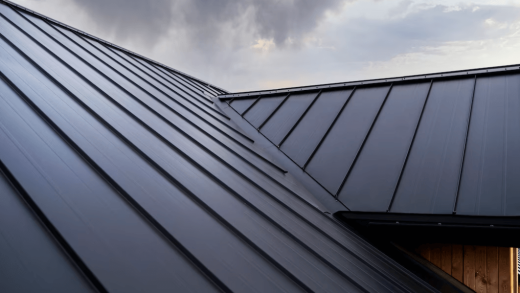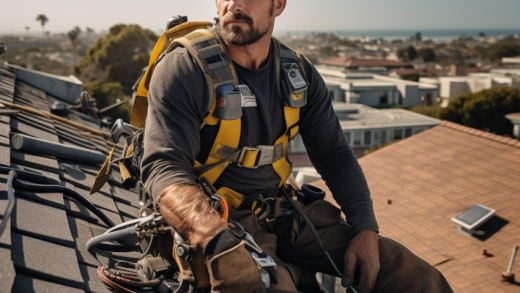Let the Sunshine in with Roof Skylights

Are you dreaming of a brighter, more inviting home? Look no further than roof skylights! These incredible design features are the perfect way to let natural light flood into your living spaces, creating an atmosphere that is both energizing and relaxing. But with so many different types of skylights on the market, it can be tough to know where to start. In this blog post, we’ll explore everything you need to know about selecting and installing roof skylights – from choosing the right size and material, to maintaining them for long-lasting beauty. So sit back, grab a cup of coffee or tea, and let’s shed some light on the world of roof skylights!
The Power of Natural Light in Home Design
Natural light is a powerful element in home design. It not only enhances the visual appeal of a space, but it also has numerous health benefits. Exposure to natural light can improve mood and productivity, regulate sleep patterns, and boost vitamin D levels. When designing a home, incorporating natural light should be a top priority.
Large windows and skylights are popular ways to bring natural light into the home. They create an open and airy atmosphere that makes rooms feel more spacious and inviting. In addition to windows and skylights, strategic placement of mirrors can reflect sunlight throughout the room.
Another benefit of natural light is its ability to showcase interior design elements such as textures, colors, and patterns. Natural lighting highlights these features in ways that artificial lighting cannot replicate.
One consideration when using natural light in home design is privacy concerns. To maximize both privacy and access to natural lighting consider frosted glass or window treatments like curtains or blinds.
Harnessing the power of natural light can transform any living space into a bright oasis while providing numerous physical benefits along with aesthetic ones for homeowners!
Benefits of Roof Skylights
Roof skylights continue to grow in popularity, and for good reason. One of the biggest benefits of roof skylights is the introduction of natural light into your home. Natural light has been proven to enhance mental health, improve mood and boost productivity levels.
In addition to improving your overall well-being, natural light can also help reduce energy costs by decreasing the need for artificial lighting during daylight hours. This makes roof skylights an eco-friendly choice that also saves money on utility bills.
Another benefit of roof skylights is their ability to increase ventilation in a space. Ventilating skylights allow fresh air to enter while expelling stale indoor air, promoting better indoor air quality and reducing the risk for mold growth.
Furthermore, installing a roof skylight can add aesthetic value to any room or living space by providing a unique architectural detail that draws attention upward towards the sky.
Investing in a roof skylight not only enhances your home’s overall appeal but also offers numerous benefits related to both health and eco-friendliness.
Types of Roof Skylights
There are three main types of roof skylights: fixed, ventilating, and tubular. Fixed skylights are the most common type and do not open or close. They provide natural light to a room without ventilation.
Ventilating skylights, on the other hand, can be opened to allow fresh air into a space. They are ideal for bathrooms and kitchens where proper ventilation is important.
Tubular skylights are smaller in size compared to traditional roof windows but work just as effectively to bring natural light into small spaces like closets or hallways.
When selecting the right type of skylight for your home, consider factors such as location and size. If you want a view of the sky from your bedroom or living room then choose larger fixed or ventilating skylights that will provide an ample amount of daylight during daytime hours.
Additionally, it is important to consider material and glazing options when selecting your skylight type. Choosing double-paned glass can help improve energy efficiency while tinting can reduce glare from direct sunlight.
Each type of roof skylight has its own unique benefits so it’s essential to select one that best fits your needs based on usage requirements and design preferences.
Fixed Skylights
Fixed skylights are a popular type of roof skylight that doesn’t open or close. They are ideal for areas where ventilation is not necessary, but natural light is desired. Fixed skylights come in various shapes and sizes to suit different needs, from rectangular to circular and even custom-made options.
One benefit of fixed skylights is their ability to bring in an abundance of natural light into your home or space without compromising on privacy. This makes them perfect for rooms like bathrooms, closets, hallways or stairwells which may require additional lighting.
Another advantage of fixed skylights is their energy efficiency. By allowing more natural light into your space, you can reduce the need for artificial lighting during daylight hours and cut down on electricity bills while also reducing your carbon footprint.
When selecting a fixed skylight for your home, consider factors such as size and location relative to the sun’s movement throughout the day. You’ll want to ensure that the area beneath the skylight gets sufficient sunlight without risking overheating during hotter months.
Fixed skylights offer many benefits as an alternative source of natural light in any space without giving up privacy or energy-efficiency concerns.
Ventilating Skylights
Ventilating skylights are a popular choice for homeowners seeking to improve indoor air quality and ventilation. Unlike fixed skylights, ventilating skylights can be opened and closed as needed, allowing fresh air to circulate throughout the home.
One of the key benefits of ventilating skylights is their ability to regulate temperature and humidity levels in a room. By opening the skylight, warm or stale air can escape while cool, fresh air enters from outside.
Another advantage is that they offer natural light without sacrificing privacy. With a vented skylight, you can enjoy sunlight and fresh air without compromising on your privacy like you would with traditional windows.
When selecting a ventilating skylight for your home, consider where it will be located and how easy it will be to access for opening and closing. Electrically operated options are available that allow remote operation from anywhere in the house.
Proper installation by an experienced professional ensures optimal performance and longevity of your new investment. Choose an installer who is familiar with local building codes to ensure compliance with regulations.
Tubular Skylights
Tubular skylights are a great option for bringing natural light into spaces that don’t have access to traditional skylights. These small, tube-like structures are perfect for narrow hallways, closets, and bathrooms where larger skylights may not fit.
They work by capturing sunlight through a dome on the roof and reflecting it down into the room below through a reflective tube. This means that they can be installed in areas where windows or regular skylights would not be practical.
One of the benefits of tubular skylights is their energy efficiency. They do not require electricity to operate and can lower your reliance on artificial lighting during the day. They also provide more consistent light throughout the day compared to traditional windows which can cause glare during certain times of day.
Another advantage is their ease of installation. Unlike fixed or ventilating skylights, tubular models require minimal structural modifications to install which makes them much easier and quicker to set up.
If you’re looking for an affordable and low-maintenance way to bring natural light into tight spaces in your home or office building, consider installing tubular skylights as part of your design plan!
Selecting the Right Skylight for Your Home
Selecting the right skylight for your home is a crucial decision that will impact both the aesthetic and functional aspects of your living space.
Firstly, you need to consider the size and location of your roof skylight. Skylights come in different shapes and sizes, so it’s important to choose one that fits well with your roof structure while also allowing sufficient natural light into your room.
Next, material and glazing options should be taken into account as they affect energy efficiency, durability, and safety features. You can choose from various materials such as glass or plastic, each with its own unique benefits.
Also important is compatibility with your roof type – flat roofs require a different kind of installation than pitched ones. Seek professional advice if you’re unsure about this aspect.
When deciding between DIY installation versus hiring professionals, consider factors such as cost savings versus time investment and skill level required.
Lastly, maintaining your skylight is an essential factor to ensure longevity. Ensure debris like leaves are cleared regularly; check for leaks or cracks periodically; Keep it clean by wiping down any dirt buildup on the surface when necessary.
Taking these considerations into account will help you select a skylight that perfectly complements both design aesthetics whilst fulfilling practical needs within budget constraints.
Size and Location Considerations
When it comes to selecting the right roof skylight for your home, size and location are crucial considerations. Skylights come in various sizes, shapes, and styles, so choosing one that fits perfectly with your roof structure is important.
The ideal size of a skylight depends on the room where it will be installed. A small skylight may suffice for a bathroom or closet, but a larger one may be needed for living rooms or kitchens. In addition to size, placement is also essential – installing a skylight too close to walls or obstructions can limit its effectiveness.
Another factor to consider when choosing a location is the direction of sunlight exposure. East-facing windows allow morning light while west-facing ones provide warm afternoon sunsets. South-facing windows offer maximum daylight throughout the day while north-facing ones provide consistent indirect light.
It’s important to consult with an expert before making any decisions about sizing and positioning of your new skylight. They can help you determine what type of installation will work best for your particular needs and budget constraints without compromising quality or safety standards.
Material and Glazing Options
When it comes to selecting the right skylight for your home, considering the material and glazing options available is crucial. The materials used for the frame can include vinyl, fiberglass, aluminum, or wood. Each material has its pros and cons in terms of durability, cost, and aesthetics.
In terms of glazing options, you can choose between single-pane or double-pane glass. Double-pane glass provides better insulation and energy efficiency while also reducing noise pollution from outside.
Another option to consider is low-e coating on the glass which reduces heat transfer through the window while still allowing natural light to pass through.
Additionally, there are various tinting options available that can help control glare and reduce UV damage to furniture inside your home.
Ultimately, it’s important to select a skylight with a material and glazing option that aligns with both your aesthetic preferences as well as practical considerations such as energy efficiency. Consider consulting an expert if you’re unsure about which option would work best for your specific needs.
Compatibility with Your Roof Type
When it comes to installing roof skylights, one important consideration is the type of roof you have. Not all skylights are compatible with every roofing material and design.
For example, if you have a flat or low-sloped roof, a curb-mounted skylight may be the best option as it provides extra support for the weight of the unit. On the other hand, if you have an angled or pitched roof, a deck-mounted skylight may be more appropriate.
It’s also important to consider whether your roofing material is suitable for flashing installation around the skylight. Flashing helps prevent leaks and water damage by creating a watertight seal between the skylight and your roofing materials.
Some common types of flashing include step flashing (used with shingle roofs), saddle flashing (used with metal roofs), and apron flashing (used with tile roofs).
Ultimately, selecting a compatible skylight based on your specific roof type will ensure proper function and longevity of both your new addition and existing structure.
Professional Installation vs. DIY: What You Need to Know
When it comes to installing skylights, homeowners have two options: hiring a professional or doing it themselves. While DIY projects can be rewarding, there are some important factors to consider before taking on the task.
Firstly, installing a skylight requires working on the roof which can be dangerous if proper safety precautions are not taken. A professional installer will have experience and training in this area, ensuring that the job is done safely and efficiently.
Secondly, skylights require precise measurements and installation techniques to ensure they do not leak or cause damage to your roof over time. Professional installers have access to specialized tools and equipment that allow them to complete these tasks accurately.
Choosing a reputable contractor for your skylight installation ensures peace of mind knowing that any issues will be covered under warranty. In contrast, DIY installations may void warranties from manufacturers.
In summary, while DIY installations may save upfront costs in the short term for those who feel confident completing this type of project themselves; however using professionals offers many benefits such as safety assurance during the installation process through warranty coverage after completion.
Maintaining Your Skylight: Tips for Longevity
Maintaining your skylight is essential for its longevity and ensuring it continues to provide natural light to your home. Here are some tips that can help you maintain your skylight:
Regular Cleaning: Regular cleaning of the skylight is important as dirt and debris can accumulate on the surface, blocking natural light from entering. Use a soft cloth or sponge with mild soap and water to clean both the inside and outside surfaces.
Inspect Seals: Make sure to inspect the seals around the skylight regularly, especially after heavy rain or snowfall. Damaged or cracked seals can allow moisture into your home leading to leaks and damage.
Trim Overhanging Branches: Trim any overhanging branches that may be rubbing against or shading your skylights. This will prevent them from damaging the glass or obstructing sunlight.
Check for Condensation: Condensation in between panes of glass indicates a seal failure that needs repair immediately before further damage occurs.
Professional Maintenance: Consider hiring professionals for maintenance tasks such as roof inspection, gutter cleaning, and flashing repair which could save money in the long run by avoiding costly repairs if problems go unnoticed.
By keeping up with regular maintenance of your roof skylights, you can ensure they work efficiently for years while letting natural daylight brighten up every corner of your home without hassle!
Common Skylight Challenges and How to Overcome Them
Skylights are a great way to bring natural light into your home but, like any other home improvement project, they can present some challenges. One of the most common challenges that homeowners face is leaks. Skylight leaks can be caused by improper installation or poor quality materials. To avoid this problem, it’s important to choose a reputable contractor who has experience installing skylights.
Another challenge that homeowners may encounter with skylights is condensation. Condensation occurs when warm air meets cold surfaces and can lead to water damage and mold growth if left unchecked. To prevent this issue, make sure your skylight is properly insulated and ventilated.
Aesthetic concerns are also something to consider when installing skylights in your home. Some people worry that skylights will detract from the look of their homes or clash with their existing decor. However, modern skylights come in a variety of styles and designs so you’re sure to find one that complements your home’s aesthetic.
Cleaning and maintenance can be an issue for some homeowners with skylights as they can be difficult to access depending on where they’ve been installed on the roofline. However, regular cleaning is essential for maintaining the longevity of your skylight so it’s worth investing in professional cleaning services if necessary.
While there are certainly some potential challenges associated with adding roof skylights to your home design plans – these obstacles shouldn’t deter you from enjoying all the benefits natural light brings!
The Role of Skylights in Sustainable Design
Skylights play a crucial role in sustainable design by reducing the need for artificial lighting during daylight hours. This means that homeowners can save money on electricity bills and reduce their carbon footprint, contributing to a more environmentally friendly lifestyle.
In addition, skylights allow for passive solar heating, which is an energy-efficient way of keeping homes warm during cooler months. By allowing natural light and heat into your home through skylights, you are relying less on traditional heating methods such as radiators or electric heaters.
Moreover, skylights help to improve indoor air quality by promoting better ventilation. Ventilating skylights can be opened up to allow fresh air into your home while expelling stale air and odors out. This helps to prevent the buildup of harmful pollutants that can impact your health negatively.
When selecting a skylight for sustainable design purposes, it’s important to consider factors such as size and location carefully. A correctly sized skylight will maximize the amount of natural light entering your home without compromising its energy efficiency or structural integrity.
Incorporating roof skylights into sustainable designs is not only beneficial for homeowners but also contributes positively towards environmental conservation efforts globally!
Case Study: Transforming Spaces with Skylights
Skylights are not only a stylish addition to your home, but they also have the power to transform spaces in extraordinary ways. From brightening up dark corners of a room to creating a sense of spaciousness, skylights can work wonders for any interior design project.
Take, for instance, the case study of a family living in an old Victorian-style house with very little natural light. The homeowners wanted to create an open and airy atmosphere without sacrificing privacy or security. They decided on installing two large tubular skylights in their kitchen area that would bring in plenty of daylight while still maintaining their privacy.
The transformation was remarkable! With the installation of these skylights, the kitchen went from feeling cramped and dreary to becoming one of the brightest and most inviting spots in the entire house. The owners could now enjoy breakfasts bathed in sunlight every morning and entertaining guests under starry skies at night.
Beyond enhancing aesthetics and livability, this case study is proof that adding roof skylights is an excellent investment for increasing property values as well. So if you’re looking for a way to transform your space into something truly special, consider incorporating roof skylights into your home renovation plans today!
Conclusion
Roof skylights are a fantastic addition to any home for those looking to bring more natural light into their space.
With the numerous benefits they offer, such as improving mood and energy levels, saving on electricity bills, and enhancing the overall look of your home’s interior design, it’s no wonder why more homeowners are opting for this simple yet effective solution.
When selecting a skylight for your home, keep in mind factors such as size and location considerations, material options available in the market today, and compatibility with your roofing type. It is also important to decide whether you want professional installation or opt for DIY projects depending on your skill level.
Lastly, let’s remember that having skylights brings sustainability into our homes by reducing artificial lighting needs during daylight hours, which translates to less energy consumption from non-renewable sources.
With all these considerations in mind, we hope you will enjoy basking in the beautiful sunshine streaming through your new roof skylight!



